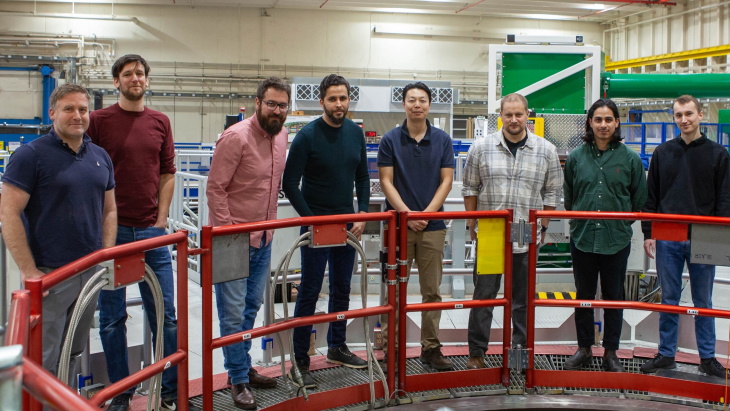
Nuclear fusion is the process by which two light nuclei combine to form a single heavier nucleus, releasing a large amount of energy. First Light is pursuing a form of inertial confinement fusion called projectile fusion, which creates the extreme temperatures and pressures required to achieve fusion by compressing a target containing fusion fuel using a projectile travelling at a tremendous speed. This differs from approaches pursued by other mainstream fusion companies in that it does not involve using complex, energy-intensive, expensive lasers, or magnets.
Oxford-based First Light leveraged the vast power of Sandia's Z Machine for the first time last month to fire a projectile at its unique amplifier technology.
The Z Machine is the most powerful pulsed power facility in the world. With a peak power of 80 trillion watts, it electromagnetically launches projectiles to higher velocities than any other facility in the world. These are used to impact samples of material, testing their properties at extreme pressures.
Funded by the US Department of Energy, Sandia allows the Z Machine to be used for multiple high-energy density research fields in stockpile stewardship science and other forms of energy generation. It fires around 200 shots per year.
First Light - which has been granted three 'shots' on the Z Machine - is focusing on exploring the limits of its unique amplifier technology. Access to the Z Machine allows First Light access to pressure regimes that simply are not possible anywhere else in the world, including on its own pulsed power machine, Machine 3, one the largest machines of its kind in Europe.
First Light's successful first experiment set a new pressure record for quartz at Sandia's facility, raising it from 1.5 terapascal (TPa) to 1.85 TPa, while also maintaining the sample conditions required for high precision measurements.
The company said the test proved its target technology works across driver platforms and specifically on the most powerful pulsed power machine in the world. This, it said, validates that the core technology scales in line with simulations and highlights the experimental capability of First Light's team.
It plans to fire its next shot on the Z Machine at the end of this year.
"We are delighted to report that our first shot on the Z Machine was a resounding success - breaking the pressure record for the facility and further validating the value of First Light's unique amplifier technology," said Nick Hawker, founder and CEO of First Light Fusion. "Our ongoing partnership with Sandia and access to its state-of-the-art Z Machine enables us to test our unique amplifier technology at pressures we can't access anywhere else in the world.
"Testing at higher pressures is incredibly important as we seek to push the limits of what our amplifiers can do. We look forward to breaking the pressure record again later this year."
Daniel Sinars, director Sandia's Pulsed Power Sciences Center, added: "These joint experiments were conducted as part of Sandia's Z Fundamental Science Program, which permits potential academic and industry collaborators to propose basic science experiments on the Z Machine. Proposals undergo a competitive review process involving non-Sandia referees and we typically award about 14 shots annually.
"This proposal was intended to advance our knowledge of the response of quartz at high pressures, which is important because quartz is a standard window material used on many materials experiments on Z, NIF, and Omega. Getting a successful result on this first-ever experiment is a testament to the joint team's excellent experimental design and careful attention to its execution. Continued success along these lines could lead to new platforms for stockpile stewardship materials experiments on Z."